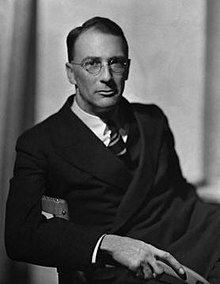In 1951, when Humphrey Bogart won his only Oscar, it came for his performance as Charlie Allnut in The African Queen, a movie which consistently occupies any Best Movies list. The film became so popular, it overshadowed the book almost completely.
 The author, C.S. Forester (1899 – 1966), wrote many novels, the most famous of which was the 12-book Horatio Hornblower Saga about a Royal Navy officer during the Napoleonic Wars. Forester also penned crime novels, children's stories, and science fiction. ("Cecil Scott Forester" was the pseudonym used by Cecil Louis Troughton Smith, an Englishman who eventually settled in the United States.)
The author, C.S. Forester (1899 – 1966), wrote many novels, the most famous of which was the 12-book Horatio Hornblower Saga about a Royal Navy officer during the Napoleonic Wars. Forester also penned crime novels, children's stories, and science fiction. ("Cecil Scott Forester" was the pseudonym used by Cecil Louis Troughton Smith, an Englishman who eventually settled in the United States.) |
| C.S. Forester |
One advantage fiction has is its ability to make characters' thoughts and feelings accessible to the reader in a direct way unavailable to film. Movies share a limitation with real life -- a viewer can only guess at characters' true motivation -- whereas a writer can simply tell a reader what characters are thinking/feeling/hoping/planning. The difference results in literature's ability to provide a deeper analysis of what it means to be human.
However, that doesn't mean literature always tells the better story.
With Forester's background in portraying naval history, his point of view naturally defaults to that of the military. Which means that although the novel does a better job of revealing why Rose and Charlie are the people they are, the real focus of the novel centers more on the conflict of the Great War; characters serve only as conduits of History, a very European point of view.
 |
| John Houston |
This artistic difference manifests itself in its most pronounced way in the different endings of the two genres: in the book, the African Queen sinks in a storm and the British navy destroys the German boat; in the movie, by one of the most improbable coincidences, the Louisa manages to run into the flotsam of the wreckage of the Queen, exploding the improvised torpedoes Charlie has rigged, thereby sinking the German boat.
So, which is the real story of the African Queen? Is the true version that of the original author, or that of the more widely experienced movie? Does it make sense to say that both versions, though different, are true? What does truth mean in art? Do the two versions represent a Venn diagram with an area of overlap, or are they two completely separate universes with no common ground at all? Can truth be represented in multiple ways and still be truth? Is truth contextual or universal? Does The African Queen, in both or either of its guises, answer any of these questions? What does art do?

No comments:
Post a Comment